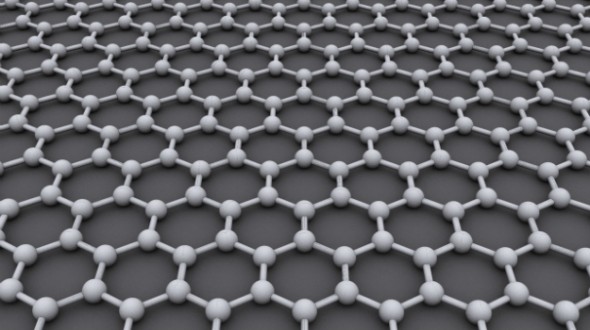5 Reasons Graphene Will Change Gadgets Forever
The future of technology could hinge on a single material. The industry is currently buzzing over the potential of graphene, which is the strongest, slimmest and most malleable material in known existence. Graphene, which is a form of carbon, could change the way our devices look, feel, perform--and even interact with our bodies. Here's how this sensational substance will influence the world of tech.
Stronger Than Steel
Smartphones like the LG G Flex can heal themselves from minor scrapes and scratches, but graphene should take durability to the next level. The material is purportedly 200 times stronger than steel. According to the American Chemical Society, graphene achieves this strength because its carbon atoms are arranged in two-dimensional sheets.
MORE: 6 Amazing iPhone 6 Concepts
Flexible Like Rubber
Researchers at Columbia University told the The New York Times that graphene could stretch by 20 percent. In other words, it's pliable just like rubber. Samsung's Advanced Institute of Technology has been experimenting with graphene transistors, which would allow for easy production of flexible displays on both wearable devices and handsets.
Graphene is also resistant to water, so the material could potentially usher in a new generation of waterproof devices whose chassis may not need to be sealed like today's devices.
The Lightest, Thinnest Devices Ever
According to a study from the American Chemical Society, graphene is thin enough to stretch over 28 football fields. The material holds a ton of tech potential, as we could someday see paper-thin smartphones and tablets that you can fold up when not in use.
A video posted on the Times' website shows a block of graphene powder balancing on top of flower--and you don't see a petal move or bend.
Sign up to receive The Snapshot, a free special dispatch from Laptop Mag, in your inbox.
Graphene is also highly transparent, according to a previous GigaOM report. This could lead to devices that are not only razor-thin, but also sport see-through displays like the one mocked up in this iPhone 6 concept. GigaOM also points out that graphene could allow for smaller electronic transistors, meaning that the slimmest devices could still be impressively powerful.
Incredible Battery Life and Audio
Graphene will likely influence not just how our devices look, but how long they last. Northwestern University researchers built a battery made of graphene and silicon, which supposedly lasted over a week on a single charge and only took 15 minutes to juice up. If graphene goes mainstream, you could possibly leave your smartphone charger home when traveling.
MORE: 10 Smartphones with the Longest Battery Life
This "wonder material" could be used for speakers, and could blow today's mainstream audio accessories out of the water. According to Gizmag, a rough prototype of graphene-based earbuds has a better frequency response curve than a set of Sennheiser MX-400 headphones.
Working With Your Body
According to Dr. Aravind Vijayaraghavan at the University of Manchester, graphene has the potential to interact with your biological systems. This would take today's fitness-tracking tech to all new heights, as graphene sensors could possibly scan your nervous system or "talk to your cells," according to the Times. Mainstream devices like the Samsung Galaxy S5 are showing a commitment to fitness features, and widespread graphene production could help make health-conscious devices the standard.
Graphene could also work with your body for some nifty non-fitness uses, as a group of researchers from the University of Michigan have used the material to build an ultra-thin light detector. According to Gizmag, this tech is small enough to fit on a contact lens, and could give you thermal vision everywhere you go.
Outlook
Aside from its physical benefits, graphene is also one of the cheapest materials around. Samsung Electronics claims it has developed a "breakthrough synthesis method" in which a large portion of graphene is turned into a single crystal on a semiconductor, which allows for rapid production of the substance.
With Samsung, Nokia, SanDisk and IBM investigating uses for graphene (along with universities), we could soon see a host of exciting new devices that are stronger, lighter and cheaper for manufacturers and consumer alike.
via NYTimes.com



